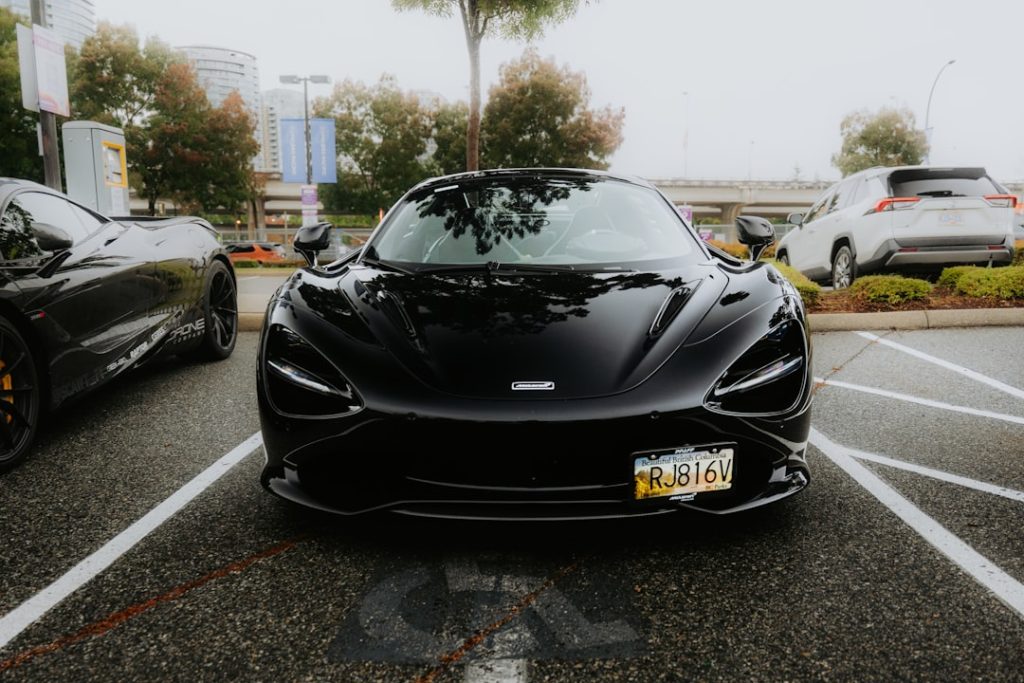The digital automotive marketing landscape has undergone a significant transformation in recent years, driven by advancements in technology and shifts in consumer behavior. As more consumers turn to the internet for information, research, and purchasing decisions, automotive dealerships must adapt their marketing strategies to meet these evolving demands. The rise of digital platforms has created a more competitive environment, where traditional marketing methods are no longer sufficient.
Dealerships must now embrace a multi-channel approach that integrates various digital marketing tactics to effectively reach and engage potential customers. In this dynamic landscape, understanding the target audience is paramount. Automotive marketers must delve into consumer demographics, preferences, and online behaviors to tailor their strategies accordingly.
For instance, younger generations are increasingly relying on social media and online reviews to inform their purchasing decisions, while older consumers may prefer more traditional forms of communication. By leveraging data analytics and customer insights, dealerships can create personalized marketing campaigns that resonate with their audience, ultimately driving higher engagement and conversion rates.
Key Takeaways
- The digital automotive marketing landscape is constantly evolving and requires a deep understanding of consumer behavior and online trends.
- Social media platforms offer a powerful tool for automotive sales, allowing dealerships to engage with potential customers and showcase their inventory in a visually appealing way.
- Optimizing SEO for automotive dealerships is crucial for ensuring that potential customers can easily find and access dealership websites and inventory.
- Email marketing can be a highly effective tool for driving automotive sales, allowing dealerships to reach out to potential customers with targeted promotions and updates.
- Video marketing strategies can be a game-changer for automotive sales, allowing dealerships to showcase their inventory and provide virtual test drives to potential customers.
Leveraging Social Media for Automotive Sales
Social media has emerged as a powerful tool for automotive sales, providing dealerships with a platform to connect with potential customers in real-time. With billions of users across various platforms such as Facebook, Instagram, Twitter, and TikTok, automotive marketers have the opportunity to showcase their inventory, share engaging content, and foster community engagement. By creating visually appealing posts that highlight new arrivals, promotions, and customer testimonials, dealerships can capture the attention of potential buyers and encourage them to visit the showroom or website.
Moreover, social media advertising allows for precise targeting based on user demographics, interests, and behaviors. Dealerships can create tailored ad campaigns that reach specific segments of their audience, maximizing the effectiveness of their marketing efforts. For example, a dealership may run a campaign targeting young families with ads showcasing spacious SUVs or family-friendly features.
Additionally, social media platforms offer valuable insights into audience engagement metrics, enabling dealerships to refine their strategies based on performance data.
Optimizing SEO for Automotive Dealerships

Search engine optimization (SEO) is a critical component of digital marketing for automotive dealerships. With the majority of consumers beginning their car-buying journey online, ensuring that a dealership’s website ranks high on search engine results pages (SERPs) is essential for visibility and traffic generation. Effective SEO strategies involve optimizing website content, structure, and technical elements to improve search rankings.
This includes conducting keyword research to identify relevant terms that potential customers are using to search for vehicles or services. In addition to on-page optimization, local SEO is particularly important for automotive dealerships. Many consumers search for dealerships in their vicinity when looking to purchase a vehicle or schedule maintenance.
By optimizing Google My Business listings and ensuring consistent NAP (Name, Address, Phone Number) information across online directories, dealerships can enhance their local search visibility. Furthermore, gathering positive reviews and ratings can boost local SEO efforts while also building trust with potential customers.
Utilizing Email Marketing to Drive Automotive Sales
| Metrics | Data |
|---|---|
| Email Open Rate | 25% |
| Click-Through Rate | 10% |
| Conversion Rate | 5% |
| Number of Email Subscribers | 10,000 |
| Number of Sales Generated | 500 |
Email marketing remains one of the most effective channels for driving automotive sales and nurturing customer relationships. By building a robust email list of current and potential customers, dealerships can deliver targeted messages that inform recipients about promotions, new inventory arrivals, service reminders, and exclusive events. Personalization is key in email marketing; utilizing customer data to segment the audience allows dealerships to send tailored content that resonates with individual preferences and behaviors.
For instance, a dealership might send a targeted email campaign to customers who previously purchased a vehicle from them, offering special discounts on maintenance services or trade-in opportunities. Additionally, automated email sequences can be employed to nurture leads throughout the buying process. For example, after a potential customer fills out a contact form on the dealership’s website, an automated email can be sent with relevant information about the vehicle they expressed interest in, along with financing options and an invitation to schedule a test drive.
Implementing Video Marketing Strategies for Automotive Sales
Video marketing has gained immense popularity in the automotive industry as it allows dealerships to showcase their vehicles in an engaging and informative manner. High-quality videos can provide potential buyers with a virtual experience of the vehicle, highlighting its features, performance capabilities, and unique selling points. From walk-around videos that give an in-depth look at the exterior and interior of a car to customer testimonials that build trust and credibility, video content can significantly enhance a dealership’s marketing efforts.
Moreover, platforms like YouTube have become essential for automotive video marketing. Dealerships can create dedicated channels to host their video content and optimize it for search engines by using relevant keywords in titles and descriptions. Live streaming events or virtual tours can also create excitement around new vehicle launches or special promotions.
By encouraging viewers to engage with the content through comments or shares, dealerships can expand their reach and foster a sense of community among potential buyers.
Harnessing the Power of Online Reviews and Testimonials

In today’s digital age, online reviews and testimonials play a crucial role in shaping consumer perceptions and influencing purchasing decisions. Potential customers often turn to platforms like Google Reviews, Yelp, and social media to gauge the reputation of a dealership before making contact. As such, it is imperative for automotive businesses to actively manage their online reputation by encouraging satisfied customers to leave positive reviews while addressing any negative feedback promptly.
Showcasing testimonials on the dealership’s website can also enhance credibility and build trust with prospective buyers. Highlighting stories from satisfied customers who have had positive experiences can resonate with potential buyers and alleviate concerns they may have about making a significant purchase. Additionally, integrating user-generated content into marketing campaigns—such as sharing photos or videos from happy customers—can further humanize the brand and create an emotional connection with the audience.
Creating a Seamless Online Customer Experience
A seamless online customer experience is vital for automotive dealerships looking to convert leads into sales. From the moment a potential customer lands on a dealership’s website, every interaction should be intuitive and user-friendly. This includes having a well-organized website layout that allows visitors to easily navigate through inventory listings, financing options, service information, and contact details.
Mobile optimization is also critical; with an increasing number of consumers using smartphones for research and shopping, ensuring that the website is responsive and accessible on all devices is essential. Furthermore, implementing features such as live chat support can enhance the online experience by providing immediate assistance to visitors who may have questions or need guidance during their browsing journey. Streamlining the lead capture process through simple forms or chatbots can also help convert interested visitors into qualified leads.
By prioritizing user experience and addressing potential pain points in the online journey, dealerships can significantly increase their chances of closing sales.
Measuring and Analyzing Digital Marketing ROI for Automotive Sales
To ensure the effectiveness of digital marketing efforts in driving automotive sales, it is crucial for dealerships to measure and analyze their return on investment (ROI). This involves tracking key performance indicators (KPIs) such as website traffic, conversion rates, lead generation costs, and overall sales attributed to specific marketing campaigns. Utilizing tools like Google Analytics can provide valuable insights into user behavior on the dealership’s website, allowing marketers to identify which channels are driving traffic and conversions.
Additionally, analyzing data from social media campaigns can help dealerships understand audience engagement levels and refine their strategies accordingly. For instance, if certain types of posts generate higher engagement rates than others, marketers can adjust their content strategy to focus on those successful formats. By continuously monitoring performance metrics and making data-driven decisions, automotive dealerships can optimize their digital marketing efforts for maximum impact and profitability.



